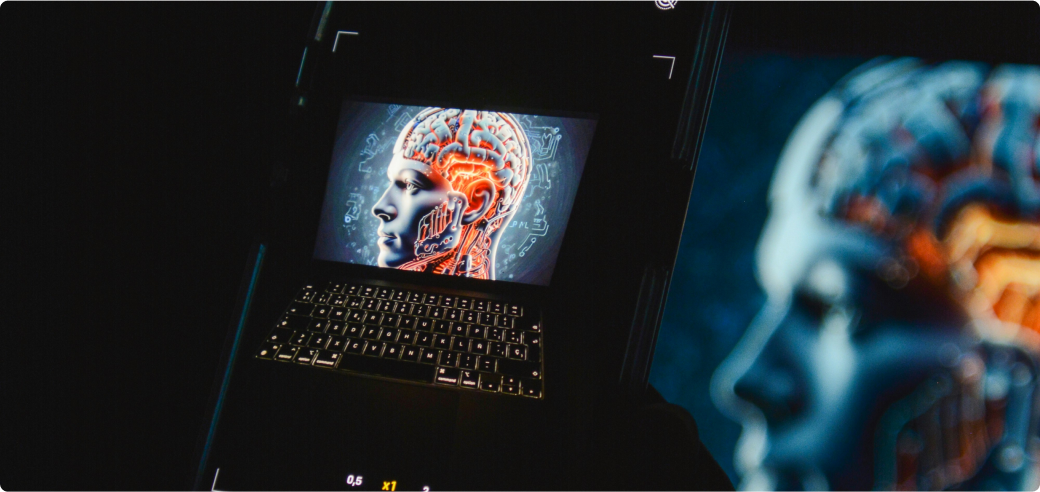

Generative AI is at the forefront of a technological revolution, enabling machines to create new content, designs, and solutions with minimal human input. From generating realistic images to producing human-like text and designing complex systems, generative AI is redefining innovation across industries. This white paper explores the concept of generative AI, its underlying technology, applications, potential benefits, and challenges, and how businesses can harness its transformative power to drive innovation and improve operational efficiency.
Generative AI refers to a class of artificial intelligence models capable of generating new content based on the data they’ve been trained on. Unlike traditional AI models that are limited to identifying patterns or making predictions, generative AI can create original and meaningful outputs, such as text, images, music, and even entire software codebases.

Generative AI is transforming the creative industry by producing high-quality content, including articles, stories, marketing materials, and even social media posts. It enables brands to automate the creation of personalized content at scale, reducing time and costs.
Generative AI is used in design and architecture to create novel product designs, building layouts, and even urban planning. AI-generated designs can offer innovative solutions that human designers may not have considered, accelerating the design process while maintaining creativity.
AI-generated code can streamline software development by automating repetitive coding tasks, debugging, and even proposing architectural solutions. Generative models can produce functional code snippets based on requirements, significantly reducing development time.
In healthcare, generative AI is being used to design new drugs, create 3D models of proteins, and simulate complex biological processes. It accelerates the discovery of new therapies by generating viable candidates for further testing.
Generative AI is pushing the boundaries of art, music, and media creation. AI-generated artworks, music compositions, and video content are being used by creators to explore new artistic expressions. This technology opens up new opportunities for collaboration between humans and machines in the creative process.
In game development and virtual reality (VR), generative AI is being used to create immersive virtual worlds, game levels, and characters. AI-generated content adds layers of complexity and realism to gaming environments, enhancing player experiences.
Generative AI can create synthetic data for training machine learning models, especially when real-world data is scarce, expensive, or poses privacy concerns. This helps organizations build more robust AI models while minimizing the risks associated with handling sensitive data.
The ability of generative AI to create realistic content raises ethical concerns about deepfakes, misinformation, and the misuse of AI-generated media. Ensuring responsible AI use and building frameworks for ethical governance is essential to mitigate these risks.
The ownership of AI-generated content poses challenges for intellectual property rights. Establishing clear guidelines for who owns the outputs generated by AI models is crucial, especially in creative industries.
Generative AI models are only as good as the data they are trained on. Poor-quality or biased data can result in flawed outputs. Addressing data bias and ensuring diversity in training datasets is necessary to improve the reliability of AI-generated results.
Implementing generative AI requires robust infrastructure, including computing power, data storage, and integration with existing workflows. Organizations must invest in the right technology stack and expertise to fully harness the potential of generative AI.
Generative AI enables businesses to innovate faster by automating the creation of new ideas, designs, and solutions. It removes the limitations of human creativity by generating new possibilities that were previously unseen or unattainable.
Generative AI drastically reduces the time and costs associated with content creation, design, and development processes. Automation of these tasks enables teams to focus on higher-level strategic work, enhancing overall productivity.
In marketing, generative AI can create hyper-personalized content tailored to individual preferences, improving customer engagement and conversion rates. This personalization extends to product recommendations, targeted advertisements, and customer service interactions.
By using AI to generate products and services more efficiently, companies can tap into new markets and opportunities that were previously too expensive or time-consuming to explore.

Generative AI is transforming industries by pushing the boundaries of what’s possible with machine learning. As the technology continues to evolve, businesses must be proactive in embracing this innovation while addressing the challenges that come with it. By leveraging generative AI responsibly and strategically, organizations can unlock new opportunities for growth, creativity, and operational efficiency in an increasingly competitive landscape.
AI in Federal Services: The Landscape Federal agencies manage vast amounts of data and complex…

6 minutes
Looking to scale your engineering efforts?

Staffing